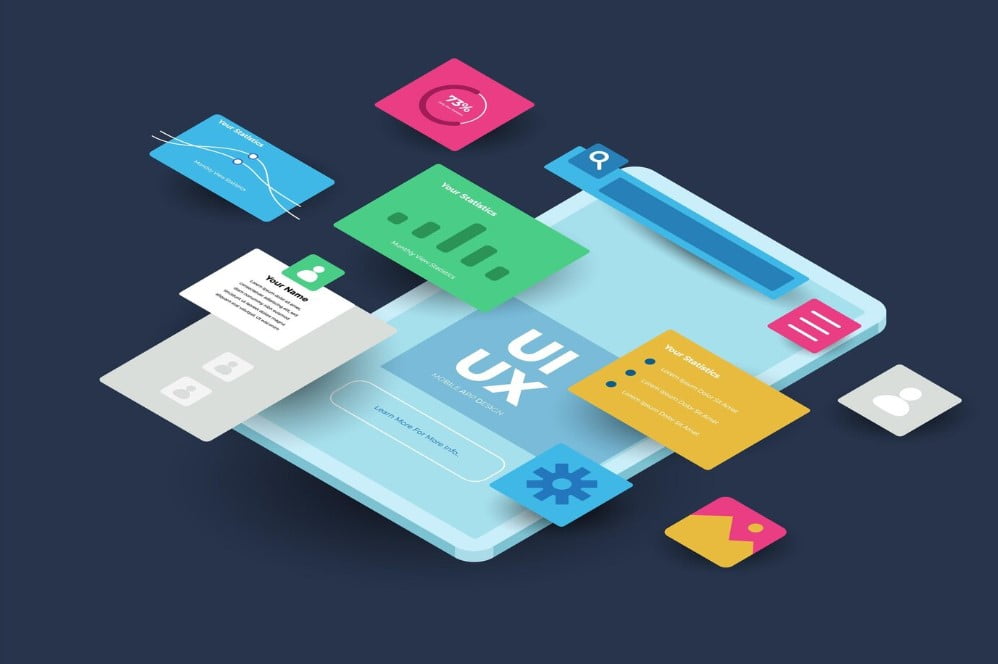In today’s digital landscape, the end user experience is a critical factor in determining the success of a product. A seamless and satisfying end user experience can lead to increased user satisfaction and retention. It can also help businesses differentiate themselves in a competitive market and foster long-term customer loyalty. In this article, we’ll explore the importance of end user experience and how a customer-centric approach can enhance the overall customer experience. We’ll also provide actionable insights on how to improve the end user experience through user-centric design, data-driven analysis, and continuous improvement. Let’s dive in and unlock the potent potential of end user experience!
Table of Contents
Understanding the End User Experience
Before optimizing the end user experience, it’s essential to understand the elements that contribute to it. Two critical components user experience (UX) design and user interface (UI) play pivotal roles in shaping how users interact with a product.
UX design addresses how intuitive and satisfying the experience is for a user, with systematic design decisions and constant iteration. The UI, on the other hand, is the visual design and interactive elements of a product, aiming to simplify usability and ease access to functionality.
A user-centric design strategy is a must to create intuitive interfaces that enhance website usability and facilitate seamless user journeys. It involves understanding user behavior, motivations and anticipating their needs to shape the product accordingly. By employing these principles, businesses gain a competitive edge to create optimal web experiences that resonate with users, resulting in a higher user satisfaction rate and enhanced retention.
Examples of user-centric design principles:
- Responsive design for mobile-friendly web pages
- Use of legible typography
- Intuitive navigational hierarchy
- Clear calls-to-action
- Meaningful animations and visual feedback
- Minimalism and white space
- Appropriate color scheme
- Incorporation of accessibility standards, ADA compliance
Benefits of good UX and UI:
Adopting a user-friendly design approach brings tangible benefits that contribute to the success of the product in the form of:
- Enhancing brand loyalty through customer retention
- Increased user satisfaction and ease of use
- Higher conversion rates
- Improved brand perception and differentiation
- Reduced bounce rates and increase in engagement
Analyzing User Behavior for Insights

Understanding user behavior is key to optimizing the end user experience. By analyzing user engagement, companies can identify patterns and pain points, making data-driven upgrades to their offerings. Some crucial metrics to track include:
| Metric | Description |
|---|---|
| Click-through rates (CTRs) | Measure how many users clicked on a specific link or ad. |
| Bounce rates | Measure how many users leave a website immediately after arriving, indicating potential issues with website design or content. |
| Conversion rates | Measure how many users complete a desired action on a website, such as making a purchase or signing up for a newsletter. |
By tracking these and other metrics, businesses can gain valuable insights into how users interact with their products or services. Based on this analysis, companies can make informed decisions that enhance the end user experience, driving greater user satisfaction.
Tailoring the Experience to Customer Needs

When it comes to delivering a satisfying end user experience, a user-centric design approach is key. By understanding the needs, preferences, and expectations of your customers, you can tailor your products and services to effectively meet their demands. When users are able to use what they want, how they want it, and the way they want it, they are more likely to experience increased satisfaction with your brand.
Personalization is a great way to achieve this. By allowing users to customize their experiences based on their unique needs and preferences, you create a sense of ownership and empower them.
Consider features like recommended content, smart recommendations, and user profiles. You build an ecosystem where the users are in charge, not only securing their loyalty but also providing security for your brand.
By putting the users’ needs first, you can create optimal user experiences that foster long-term loyalty and satisfaction.
The Power of Visual Design

Visual design is a crucial aspect of the end user experience. When done right, incorporating thoughtful and visually appealing elements into the user interface can create a pleasing and engaging experience. But how does visual design impact the end user experience?
First and foremost, a visually pleasing design can enhance user satisfaction. Users are more likely to have a positive perception of a product or service when the design is aesthetically pleasing. This positive perception can lead to increased user engagement and retention.
Visual design can also facilitate a seamless user journey. By using design elements such as clear navigation cues and intuitive icons, businesses can create a user interface that is easy to navigate and understand. This streamlined experience reduces user frustration and enhances overall satisfaction.
Moreover, visual design can be used to create an emotional connection between the user and the product. When design elements are aesthetically pleasing and reinforce the brand’s message, users are more likely to feel a sense of attachment to the product or service. This emotional connection fosters long-term loyalty and encourages users to share their positive experiences with others.
Ultimately, incorporating thoughtful visual design into the user interface is a critical component of creating a satisfying end user experience. By creating aesthetically pleasing and engaging experiences, businesses can drive user satisfaction, retention, and brand loyalty.
Streamlining Navigation and Accessibility
To create an exceptional end user experience, streamlined navigation, and accessibility are essential. A user-friendly website interface is critical in reducing user frustration and improving website usability. By ensuring easy navigation, businesses can offer a seamless user journey, enhancing the overall user satisfaction.
Moreover, incorporating accessibility features is crucial in making products more inclusive for diverse user groups. Accessibility features ensure that users with disabilities can also access and use the product comfortably. This inclusiveness fosters empathy and highlights a company’s commitment to a customer-centric approach. Thus, streamlined navigation and accessibility are key factors that can significantly improve the end user experience.
Personalization and Customization
Personalization and customization features are crucial elements in creating a positive end user experience. By allowing users to customize their experience based on their preferences and needs, businesses can enhance user satisfaction and create a sense of ownership and empowerment. This practice leads to deeper connections with users, fostering increased loyalty and retention.
User-centric design is at the core of personalization and customization. Understanding customer preferences and behavior and using that data to tailor the experience leads to a better experience for users. When designing personalized experiences, businesses should consider factors such as location, user history, and demographics.
Personalized content can enable users to find what they are looking for easily and quickly, streamlining their search process. For example, e-commerce platforms can use previous purchase data to suggest relevant products or display personalized ads based on users’ interests.
Customization options should be easily accessible and flexible. Users should be able to modify and save these custom settings for future use, allowing for continuous personalization and a smoother user experience.
Continuous Improvement through User Feedback
To enhance the end user experience, incorporating feedback from users is critical. This practice is invaluable in identifying areas for improvement and addressing pain points in the product or service. By actively seeking and listening to customer feedback, businesses can create a truly user-centric approach that fosters stronger relationships with customers and increases user satisfaction.
An effective way to gather user feedback is through surveys, focus groups, or direct communication channels such as chatbots or email. Analyzing user behavior data is another way to gain valuable insights into user needs. This data-driven approach ensures that the end-user experience is continuously improved to meet user demands.
Tip: When asking for feedback, be clear and concise in your questions and focus on areas that need improvement. Consider offering incentives to encourage participation and express gratitude to customers for taking the time to provide their insights.
Leveraging Technology for Innovation
As technology advances, exciting opportunities arise for enhancing the end user experience. Emerging trends such as augmented reality, voice interfaces, and artificial intelligence have the potential to transform the way users interact with products.
By incorporating these cutting-edge technologies, businesses can stay ahead of the curve and deliver experiences that captivate users. With the guidance of user experience (UX) design and user interface (UI) principles, brands can create intuitive and engaging interfaces.
AI integration can provide personalized recommendations and streamlined interactions, improving the user journey. Augmented reality can bring products to life and create immersive experiences. Voice interfaces provide hands-free access and intuitiveness.
By embracing technology and combining it with UX design and UI principles, businesses can create an exciting, optimized end user experience.
Measuring and Monitoring Success
To ensure the success of the end user experience, businesses must establish key performance indicators and track metrics. By keeping an eye on user satisfaction and customer experience, companies can make informed decisions and continually refine their approach to meet user needs. The following table outlines some critical metrics to consider:
| Metric | Description |
|---|---|
| User Satisfaction Score | A score based on user feedback that measures overall satisfaction with the product or service. |
| User Engagement | Analyze user behavior to determine how engaged users are with a product or service. |
| Conversion Rates | The percentage of visitors to a website who complete a desired action, such as making a purchase or filling out a form. |
By monitoring these metrics and making data-driven decisions, businesses can continuously improve the end user experience, ensuring it remains a top priority and meets user needs.
Collaborating Across Departments for Seamless Experiences
Creating a seamless end user experience requires collaborative efforts, and no single department can deliver it alone. By aligning user experience (UX) design with other customer-facing functions like marketing and customer support, businesses can ensure consistency and continuity throughout the customer journey. This cross-departmental collaboration maximizes the impact of the end user experience, resulting in higher customer satisfaction and brand loyalty.
Marketing teams can help by providing user insights, customer demographics, and market research data to the UX team, which in turn can be used to tailor the product experience to meet customer needs. Additionally, customer support teams can provide valuable feedback on user issues and pain points, which should inform future design iterations and improvements.
Effective communication and a goal-oriented mindset are essential to successful collaboration. Choosing a project manager to coordinate cross-departmental activities is key to ensuring that everyone has a voice and a clear understanding of the end goals and audience. A shared vision of the end user experience, aligned with user-centric design principles, ensures that all functions are working towards a common goal while placing customer satisfaction at the center of the experience.
Collaboration between departments can be formal or informal, depending on the organizational culture and the nature of the project. One highly effective way to foster collaboration is to conduct regular UX reviews and user testing sessions, involving all relevant stakeholders. This approach helps to share insights, brainstorm new ideas, and gain feedback from different stakeholders. Finally, celebrating collaborative successes creates a culture of collaboration that values and encourages meaningful contributions from all teams.
Conclusion
In today’s competitive digital marketplace, the end user experience is a critical factor that can significantly impact the success of a product. By focusing on enhancing the final touchpoint in interaction, businesses can improve user satisfaction, retention, and drive long-term success.
Understanding the elements that contribute to the end user experience, such as UX design, UI, and user behavior analysis, can provide valuable insights that inform the optimization process. By tailoring the product to customer needs, leveraging technology for innovation, and continuously measuring and monitoring success, companies can create optimal experiences that resonate with users and foster long-term loyalty.
Collaboration across departments, such as marketing and customer support, can ensure consistency and continuity throughout the customer journey. By adopting a customer-centric approach, businesses can create personalized experiences that enhance user satisfaction and drive brand loyalty.
Remember, measuring the success of your efforts is crucial to ongoing improvements. Establishing key performance indicators and tracking metrics can help you assess the impact of your efforts and identify areas that require attention. By prioritizing the end user experience and consistently making iterative improvements, you can create optimal experiences that captivate users and drive long-term success.





Permalink